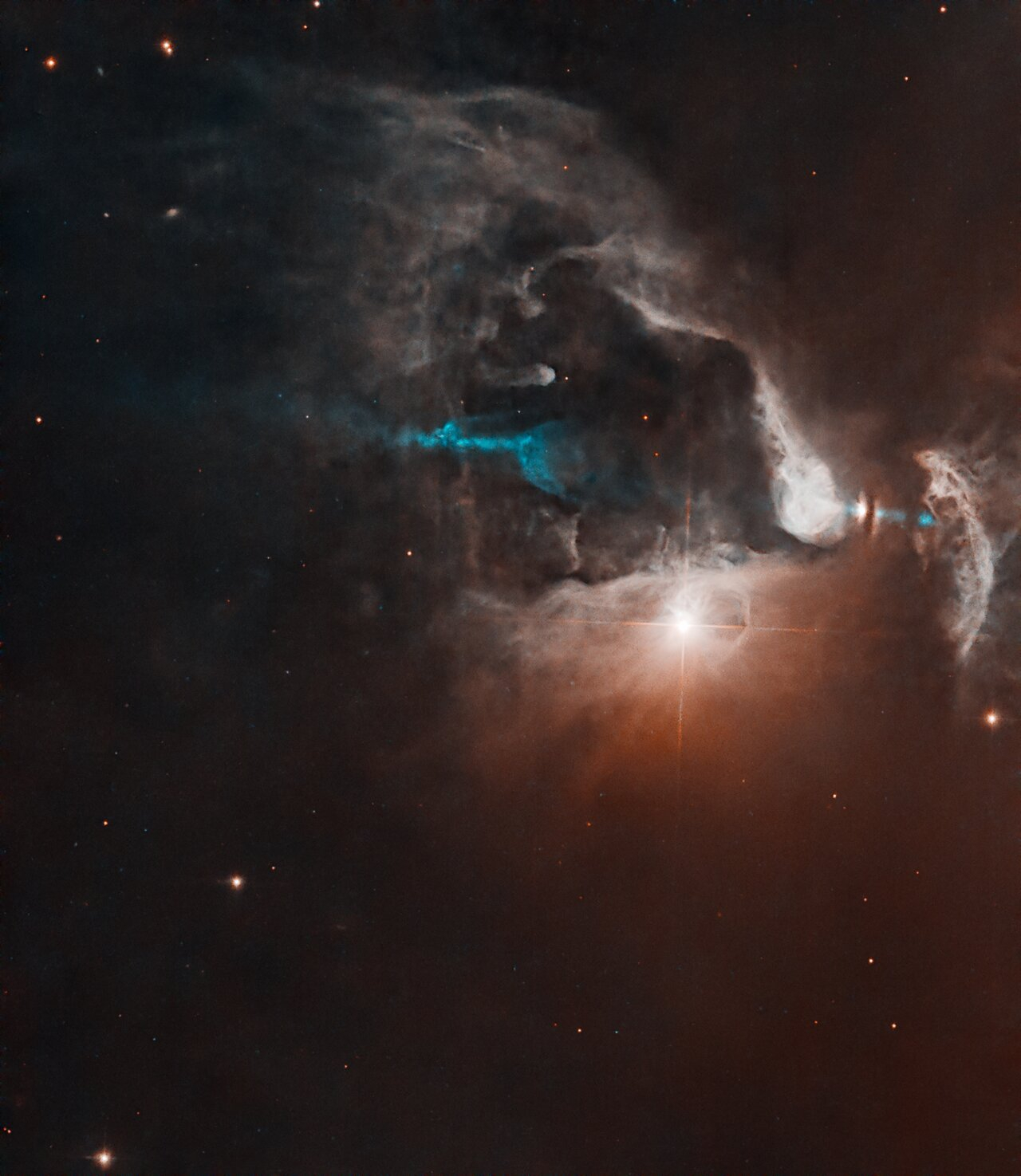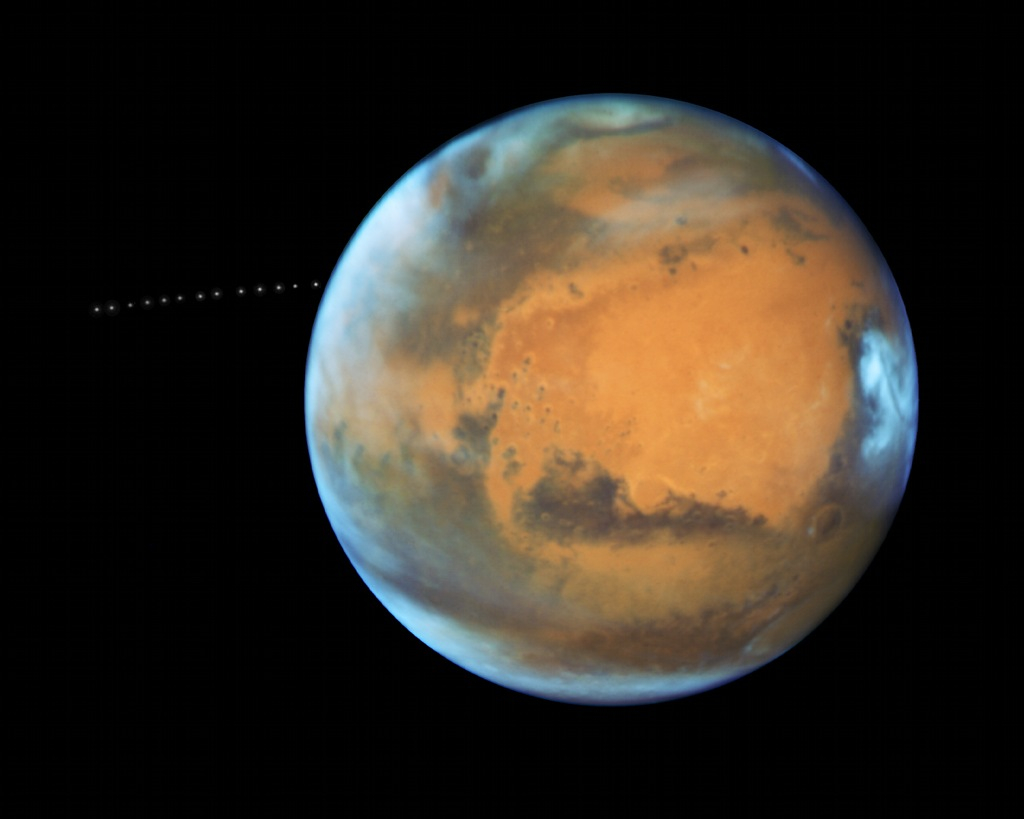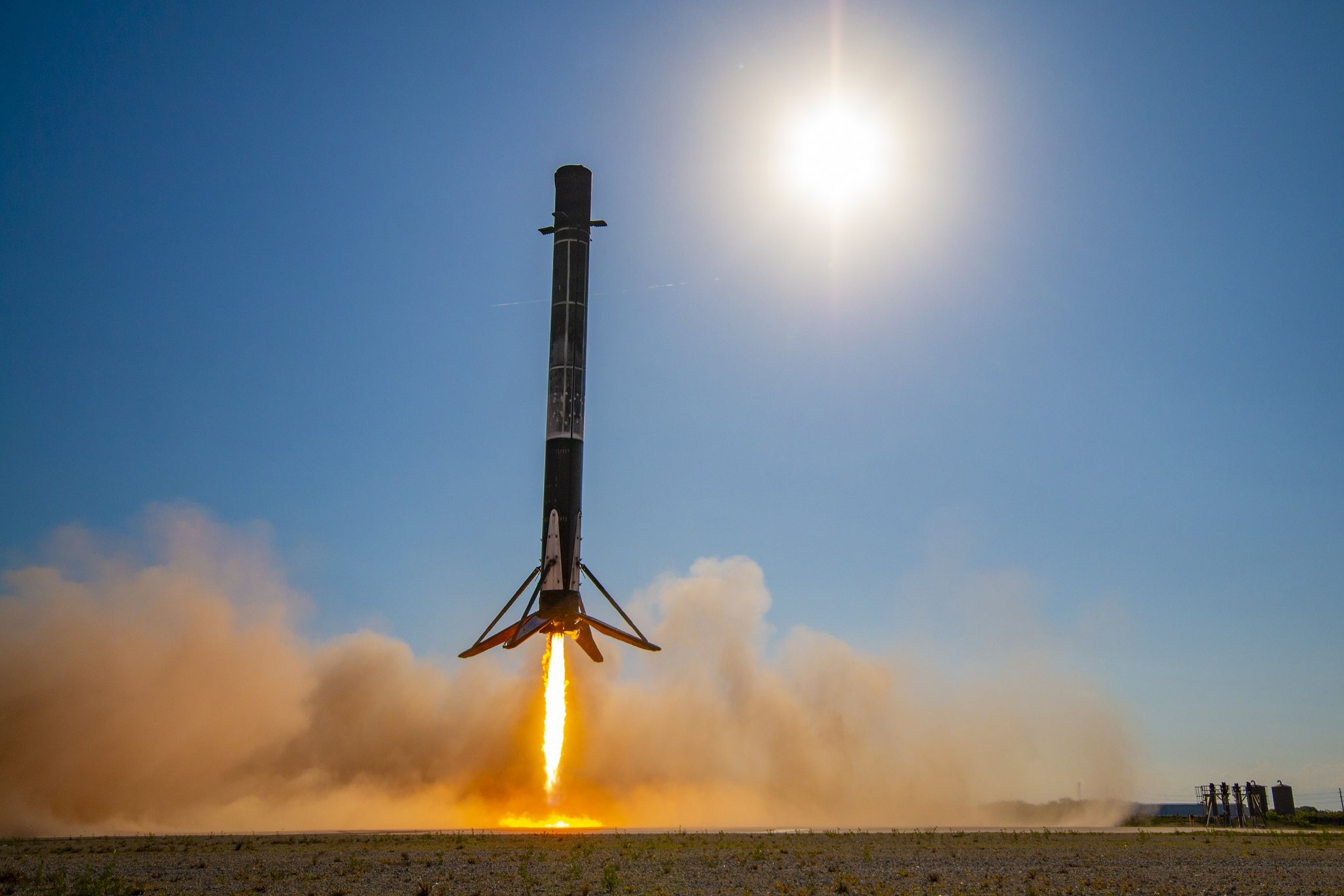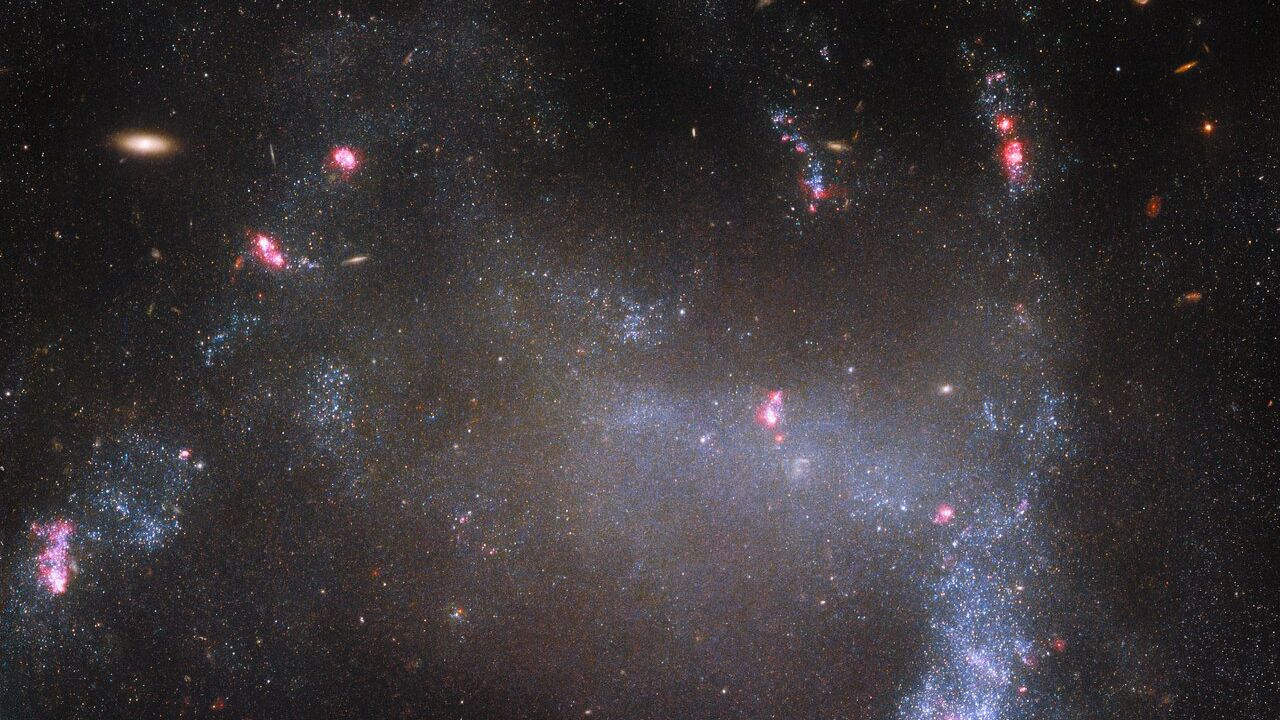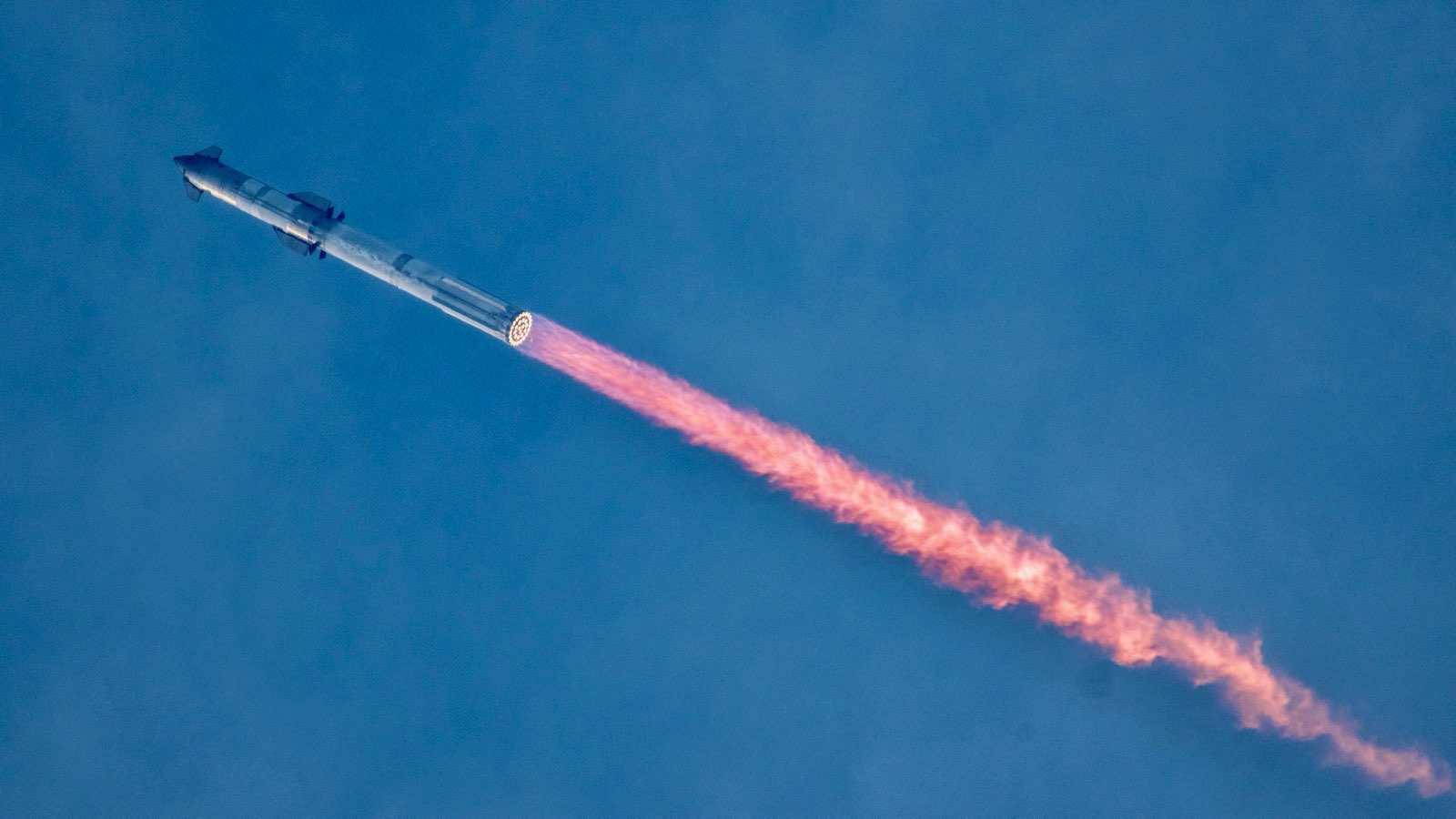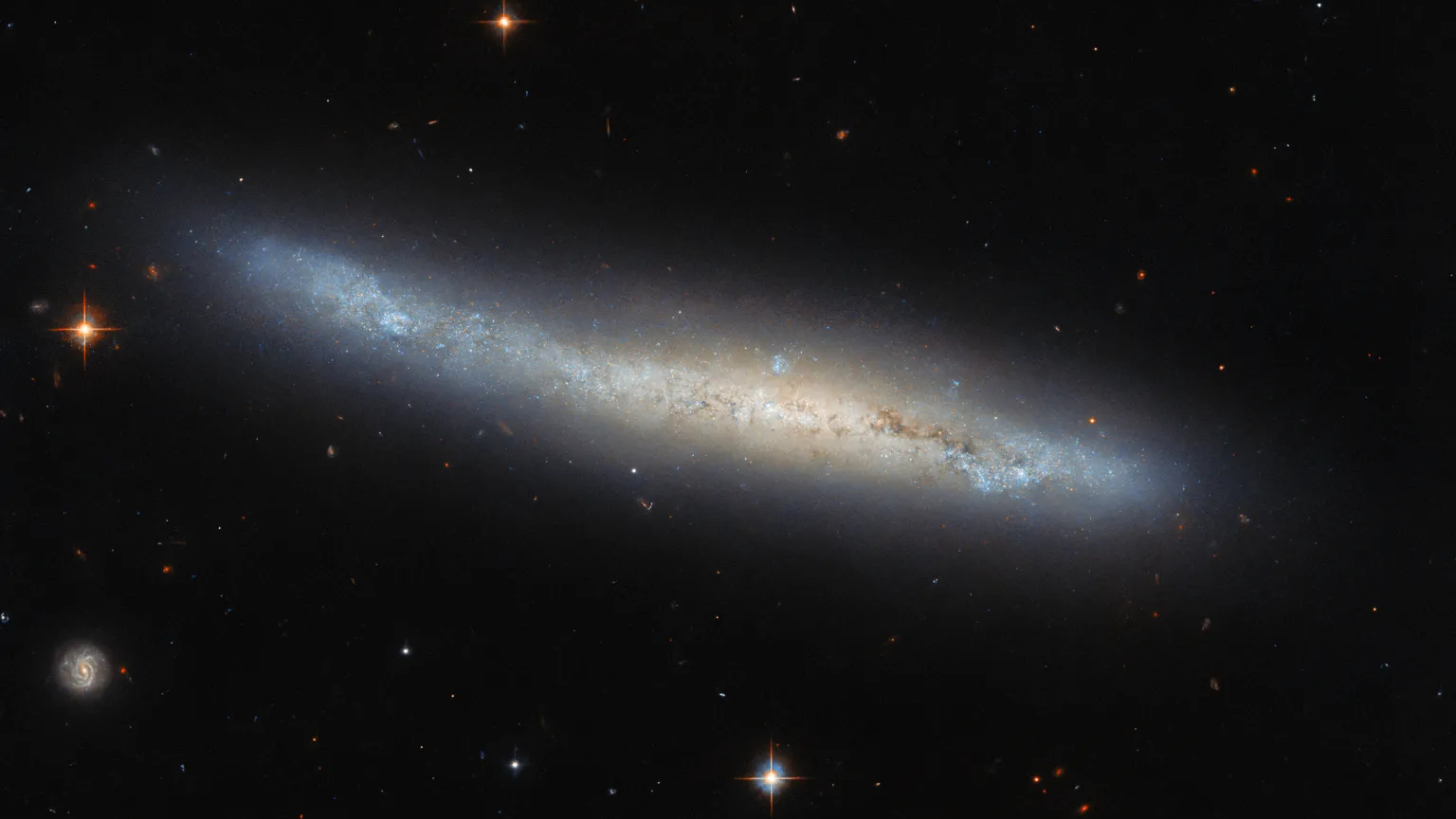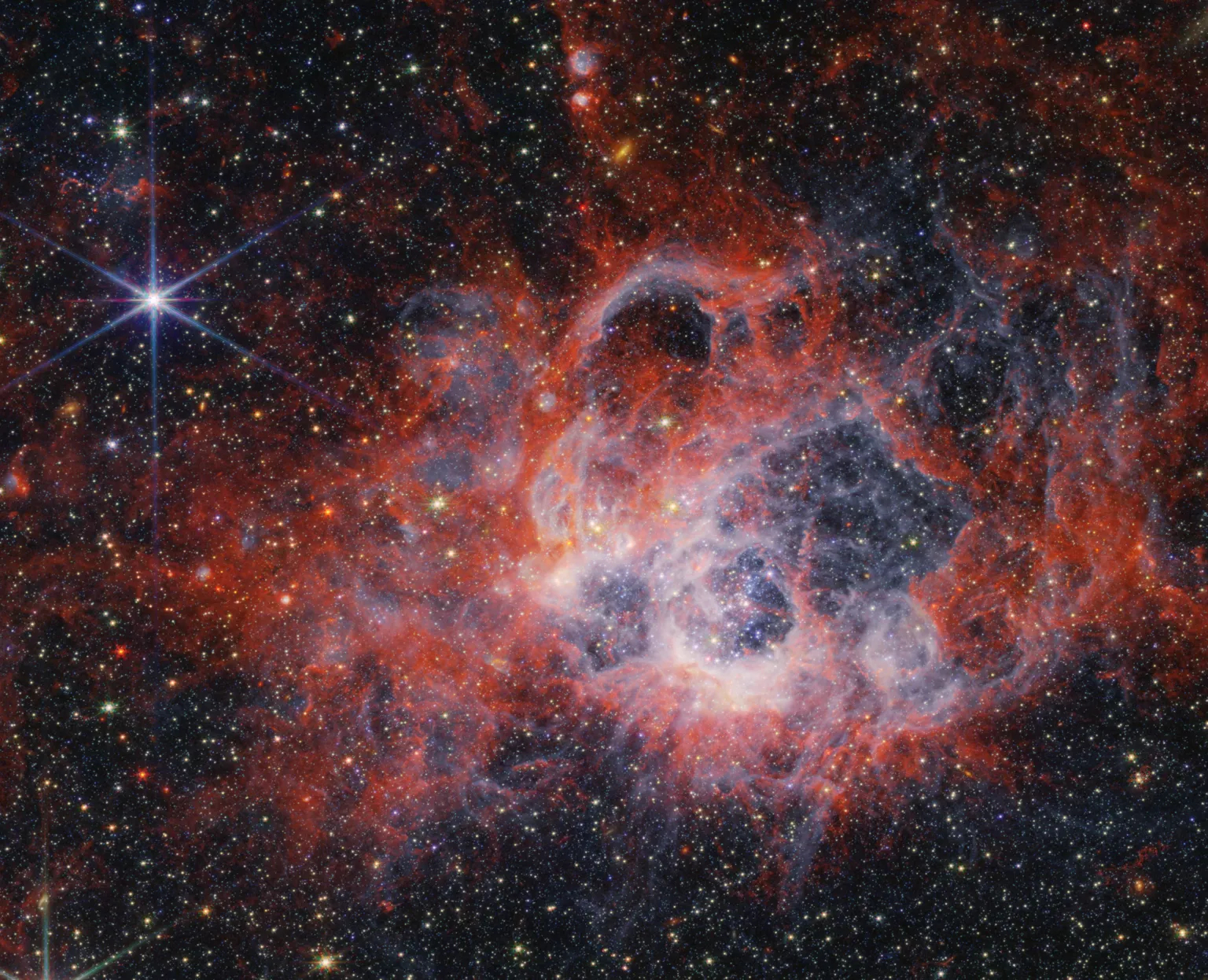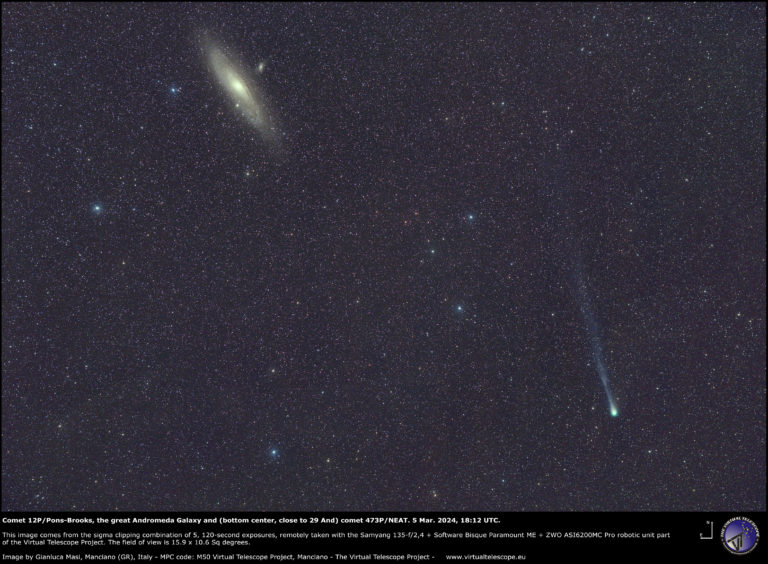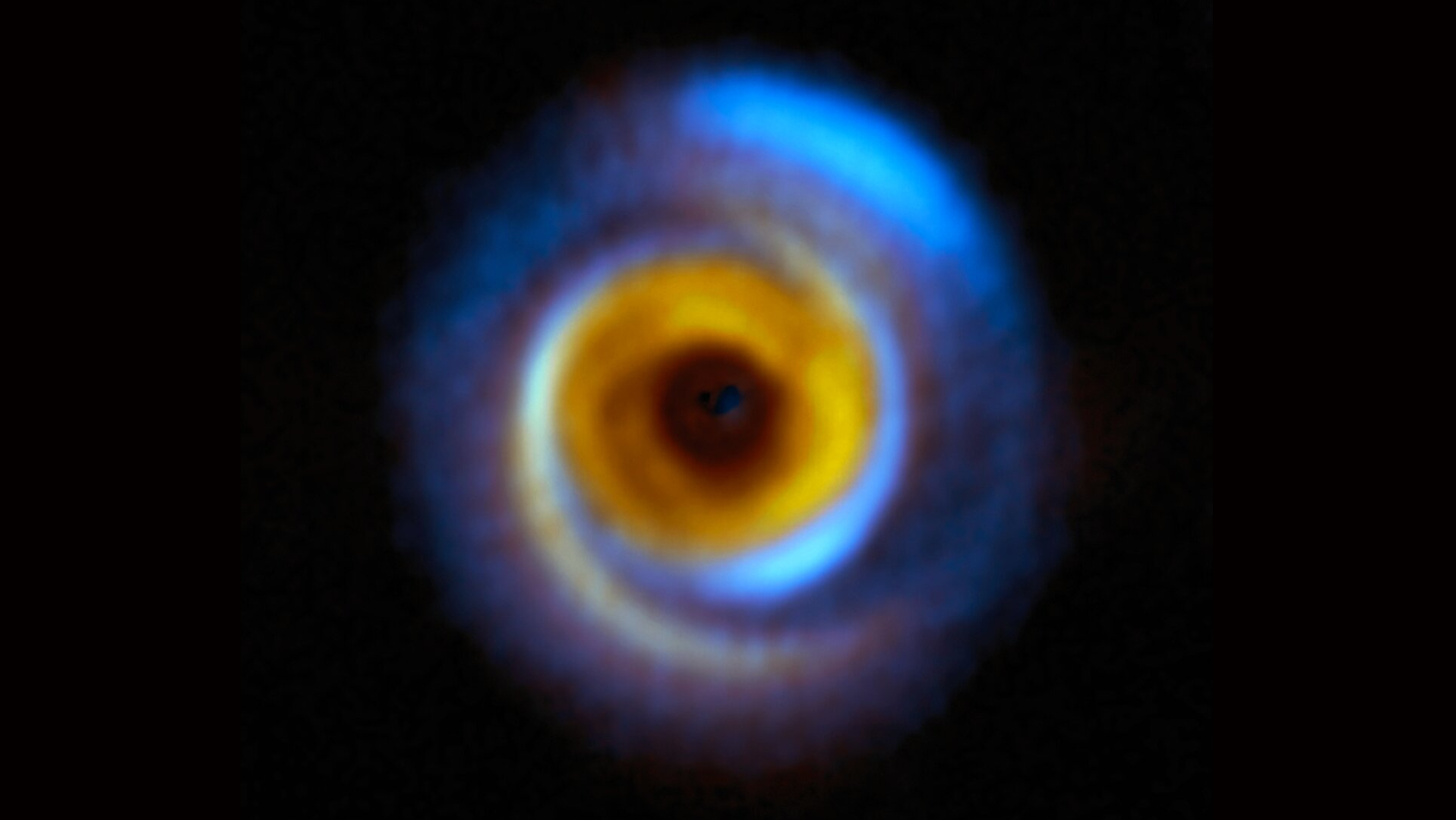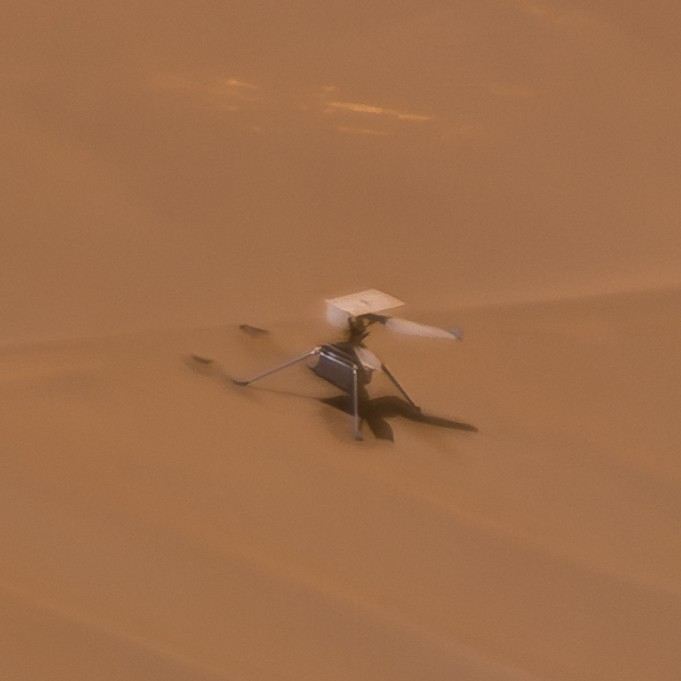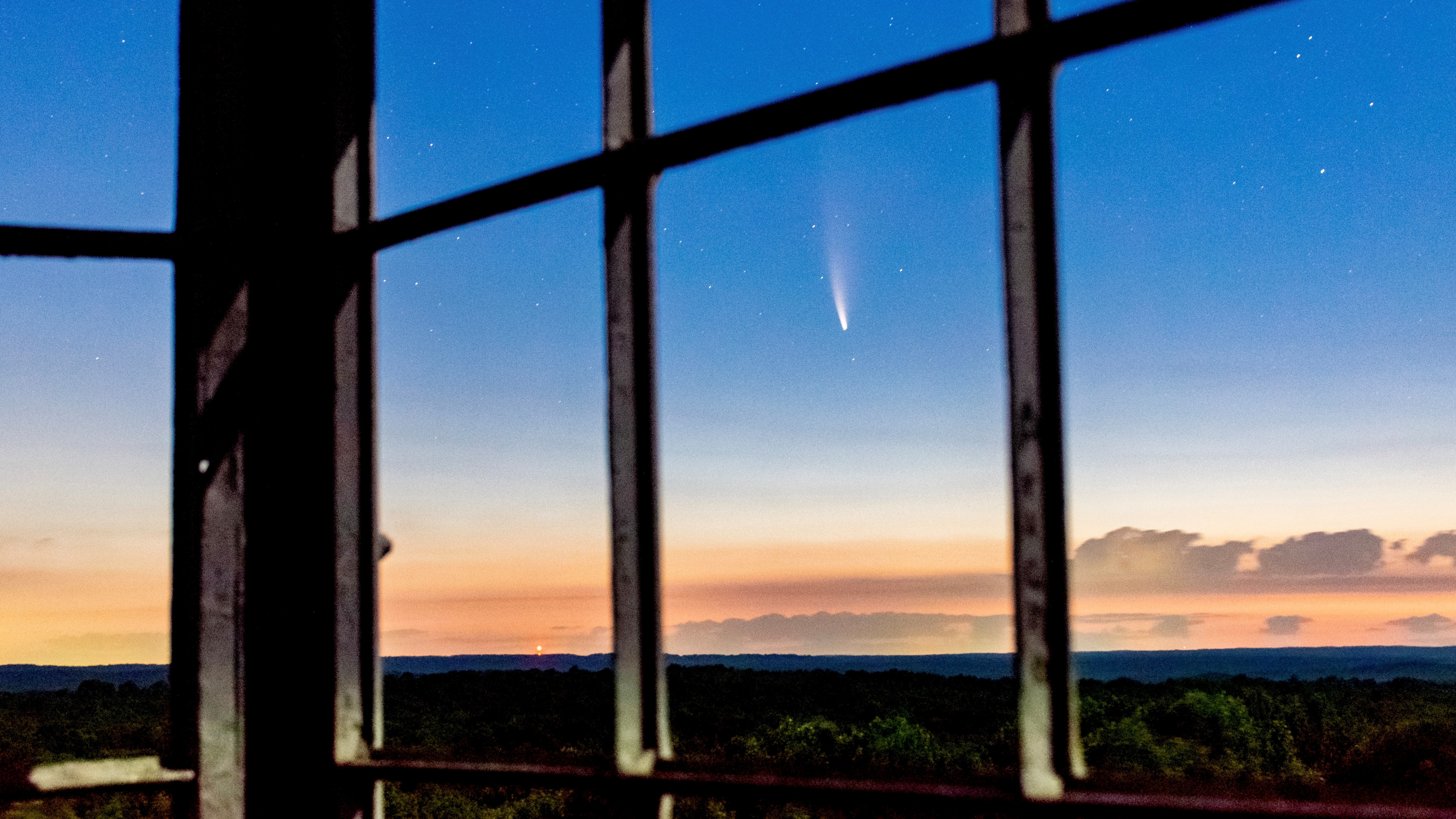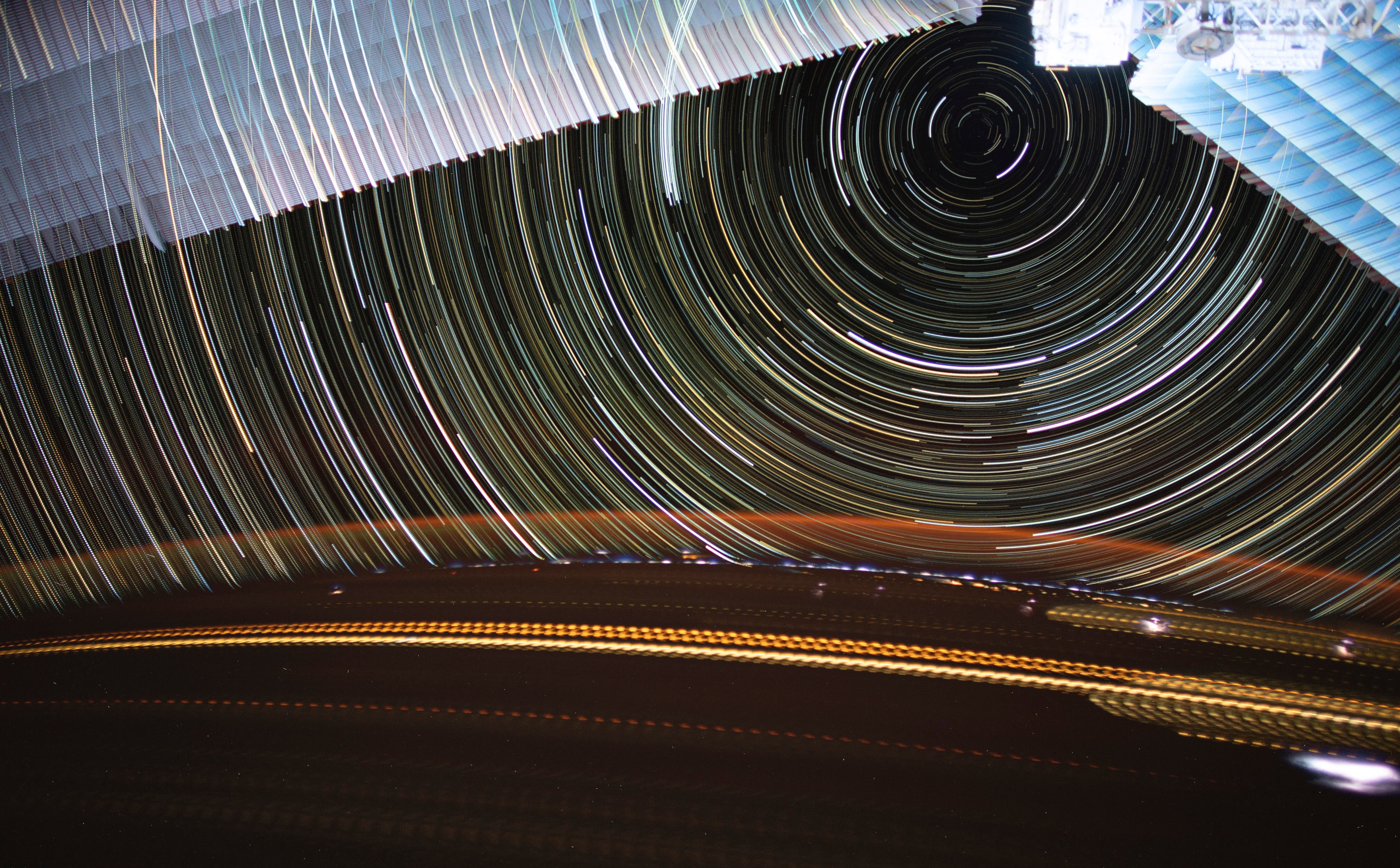Image of the Day 2024 Archive
Explore our Image of the Day 2024 Archives!
Our galactic center
Astronomers have captured the first view of polarized light and the magnetic fields that surround Sagittarius A* (Sgr A*), the supermassive black hole at the heart of the Milly Way.
The historic observation made with the Event Horizon Telescope (EHT) has revealed the neatly ordered magnetic fields have similarities with those that surround the supermassive black hole at the heart of the galaxy M87. This is surprising given that Sgr A* has a mass of around 4.3 million times that of the sun, but M87* is much more monstrous, with a mass equivalent to around 6.5 billion suns. —Robert Lea
Through the dust, a star is born
The Hubble Space Telescope has imaged a powerful jet erupting from a natal envelope of gas and dust that represents a newly born star announcing itself to the cosmos.
Hubble spotted the infant star slicing its way out of the nebula that birthed it when it zoomed in on the youthful multi-star FS Tau, located 450 light years from Earth. FS Tau is part of the Taurus-Auriga region, which is a collection of dark clouds of gas and dust, or "molecular clouds," that are home to numerous newly forming stars. —Robert Lea
Mars and Phobos
Friday, March 22, 2024: Mars' tiny moon of Phobos is seen here in this time-lapse image of the Red Planet. A total of 13 photos were taken by the Hubble Space Telescope, and stacked to demonstrate the motion of Phobos in its orbit around Mars. This image was featured today as NASA's Astronomy Picture of the Day, but was shot during Mars' closest approach to Earth in 2016.
Comin' in hot!
Thursday, March 21, 2024: SpaceX launched its 30th cargo mission to the International Space Station (ISS) for NASA this afternoon (March 21), carrying 3 tons of supplies and scientific hardware to the orbiting lab. About eight minutes after launch, the Falcon 9's first stage booster came back to Earth, making a vertical touchdown at SpaceX's Landing Zone-1, at Cape Canaveral Space Force Station. It was the sixth launch and landing for the booster, beautifully captured here as it makes its final landing burn.
West Coast Jellyfish
Tuesday, March 19, 2024: A SpaceX Starlink launch lit up skies across the U.S. West Coast on Monday evening (March 18), leaving a dazzling trail seen for hundreds of miles. A Falcon 9 rocket lifted off from Vandenberg Space Force Base on California's central coast at 10:28 p.m. EDT (7:28 p.m. local time; 0228 GMT on March 19). The launch vehicle carried a batch of 22 Starlink satellites to add to SpaceX's ever-expanding wireless internet megaconstellation.
Breaking space news, the latest updates on rocket launches, skywatching events and more!
In what's come to be known as the "jellyfish" effect, the dusk launch provided ideal conditions for the setting sun to light up the rocket's expanding engine plume against the darkening sky, as the vehicle climbed high into Earth's atmosphere.
A Spider in the Dark
Monday, March 18, 2024: Most galaxies we see have clear shapes: spirals, barred, or maybe it's just a starry oval, but every now and then scientists find something, well, irregular.
Case in point, this view of a galaxy called UGC 5829, more commonly known as the Spider Galaxy. Located 30 million light-years away in the constellation Leo Minor, the Spider Galaxy is a gauzy mass of stars with arms that are so distorted, scientists have compared them to the arms of an arachnid (which, of course, is what scientists call a spider). This image was taken by the Hubble Space Telescope and shows pockets of star formation (which appear as pink, glowing patches) and hot, bluish gas that appears brighter than the galaxy's core. "Two large arms flank the left and right of the body, and smaller streams of stars emerge from the top. Other, distant, galaxies can be seen on the edges of the image," an image description explains. - Tariq Malik
SpaceX's Starship Soars on Flight 3
Thursday, March 14, 2024: SpaceX launched the world's largest and most powerful rocket today in an epic third test flight of its Starship and Super Heavy launch system.
The 400-foot-tall rocket, which you can see here streaking towards space as seen by Space.com writer Josh Dinner, launched at 9:25 a.m. EDT (1325 GMT) on test flight that lasted just over an hour. During the flight, SpaceX's Starship Ship 28 flew higher and faster than any flight to date, and even tested a series of actions like opening its payload bay "Pez" door for Starlink deployments, attempting an in-vehicle refueling test and more.
The first stage Super Heavy booster successfully reentered Earth's atmosphere over the Gulf of Mexico, but failed to reignite its engines to make a controlled, soft-landing in the ocean. Meanwhile, Ship 28 captured stunning views of its reentry, but lost contact shortly thereafter. SpaceX is still calling it a win. - Tariq Malik
What shape, this galaxy?
Wednesday, March 13, 2024: Taken at face value, it might be hard to find a clear shape to this galaxy 55 million light-years away. But if we had a different angle, it would look all too familiar.
Despite it's stretched-out look, this Hubble Space Telescope image of the galaxy NCG 4423 actually shows a spiral galaxy, one similar in shape to our own Milky Way. The galaxy only looks like an irregular tube because we're seeing it near edge-on from our vantage point at Earth.
"If NGC 4423 were viewed face-on it would resemble the shape that we most associate with spiral galaxies: the spectacular curving arms sweeping out from a bright center, interspersed with dimmer, darker, less populated regions," NASA wrote in an image description. "But when observing the skies, we are constrained by the relative alignments between Earth and the objects that we are observing." - Tariq Malik
Welcome Home, Crew-7

Tuesday, March 12, 2024: SpaceX lit up the night sky off the coast of Pensacola, Florida early today, but not with a rocket launch. Instead, it was a Crew Dragon capsule streaking across the predawn sky to return four astronauts to Earth after six months in space. The Crew-7 astronauts included NASA astronaut Jasmin Moghbeli, Andreas Mogensen of the European Space Agency, the Japan Aerospace Exploration Agency's Satoshi Furukawa and Konstantin Borisov, a cosmonaut with Russia's space agency, Roscosmos. They spent 199 days in space during their mission to the International Space Station, where they served alongside the Expedition 70 mission. - Tariq Malik
Star nursery tendrils
Monday, March 11, 2024: The James Webb Space Telescope is revealing spectacular glimpses of our universe, and its latest view does not disappoint. This image, taken by the NIRcam instrument on Webb, shows a near-infrared view of a star-forming region known as NGC 604, which sits in the Triangulum galaxy 2.7 million light-years from Earth. The image shows sinuous tendrils of gas and dust, which shelter more than 200 of the hottest and most massive types of stars.
"It’s quite rare to find this concentration of them in the nearby universe. In fact, there’s no similar region within our own Milky Way galaxy," NASA wrote in a statement. "This concentration of massive stars, combined with its relatively close distance, means NGC 604 gives astronomers an opportunity to study these objects at a fascinating time early in their life." - Tariq Malik
Comet and Galaxy
Thursday, March 7, 2024: This image was made possible thanks to a combination of 5, 120-second exposures, taken as part of the Virtual Telescope Project 2.0, from Morocco, Italy. Pictured, comet 12P/Pons-Brooks is seen near in the sky to the Andromeda Galaxy.
12P/Pons-Brooks is also known as the "devil comet" because of the seeming appearance of horns observed erupting off the comet as it neared Earth at the end of 2023. The Andromeda Galaxy, by contrast, is much further away.
Meet NASA's Astronaut 'Flies'
Wednesday, March 6, 2024: NASA unveiled its latest astronaut class on Tuesday, March 5, adding 10 new space travelers to the U.S. astronaut corps, as well as two professional astronauts for the United Arab Emirates. The astronauts are the latest crop to join NASA's ranks of Artemis astronauts, a group that could eventually fly missions to the moon and back, as well as to the International Space Station or other low Earth orbit destinations. On Tuesday, NASA announced that all 12 astronauts have completed their training and are ready for flight assignments. You can see them in the photo above. They are (from left to right): Nora Al Matrooshi (UAE), Chris Birch, Christopher Williams, Andre Douglas, Deniz Burnham, Nichole Ayers, Jack Hathaway, Luke Delaney, Jessica Wittner, Anil Menon, Mohammad Al Mulla (UAE) and Marcos Berríos.- Tariq Malik
In blue suits, from left: Nichole Ayers, Christopher Williams, Luke Delaney, Jessica Wittner, Anil Menon, Marcos Berríos, Jack Hathaway, Christina Birch, Deniz Burnham, and Andre Douglas.
A planet is born
Tuesday, March 5, 2024: The birth of a planet can be a beautiful (if also slow) sight to behold through telescopes and nowhere is that more true than in this stunning image from the European Southern Observatory's Very Large Telescope (VLT) and ALMA radio telescope in Chile's Atacama Desert.
The image shows the planet-forming disk MWC 758, which is located about 500 light-years from Earth in the Taurus constellation. The different colors denote light in different wavelengths, with yellow representing infrared observations by the Spectro-Polarimetric High-contrast Exoplanet REsearch (SPHERE) instrument on the VLT while the blue hues are data collected by the ALMA radio telescope.
"These facilities allow astronomers to map how dust is distributed around this and other stars in different but complementary ways. SPHERE captures light from the host star that has been scattered by the dust around it, whereas ALMA registers radiation directly emitted by the dust itself," ESO officials wrote in an image description. These observations combined help astronomers understand how planets may form in the dusty discs surrounding young stars."- Tariq Malik
Falcon 9: There and back again
Monday, March 4, 2024: A sooty SpaceX Falcon 9 rocket stands atop the company's Landing Zone 1 at Cape Canaveral Space Force Station in Florida late on March 3 after launching four astronauts to the International Space Station from the nearby Pad 39A of NASA's Kennedy Space Center. The rocket, a rare brand-new Falcon 9, made its first flight on the mission and made a smooth reentry and landing, with the starry sky and wispy clouds as a serene backdrop in this SpaceX image.
Crew-8 sent NASA astronauts Matthew Dominick, commander; Michael Barratt, pilot; mission specialist Jeanette Epps, and Roscosmos cosmonaut mission specialist Alexander Grebenkin to the ISS to begin a six-month mission. - Tariq Malik
Farewell, Ingenuity
Friday, March 1, 2024: This likely our last view of NASA's Ingenuity Mars helicopter drone. Ingenuity's red planet companion, the Perseverance rover, snapped one final shot of Ingenuity, after damage to its rotor blades permanently grounded the vehicle. In total, Ingenuity completed at total of 72 flights. The valiant Mars-copter's original mission strove for only five flights; its longevity coming at the pleasant surprise of everyone. Farewell, Ingenuity. You were awesome.
Archives
Check out our Image of the Day Archives for more awesome photos.
Image of the Day 2020 Archive
Image of the Day 2019 Archive
Can't find the date you're looking for? It may have been a weekend or holiday, when we don't normally update our Image of the Day.
Click 'NEXT PAGE' below for February >
February >

Space.com is the premier source of space exploration, innovation and astronomy news, chronicling (and celebrating) humanity's ongoing expansion across the final frontier. Originally founded in 1999, Space.com is, and always has been, the passion of writers and editors who are space fans and also trained journalists. Our current news team consists of Editor-in-Chief Tariq Malik; Editor Hanneke Weitering, Senior Space Writer Mike Wall; Senior Writer Meghan Bartels; Senior Writer Chelsea Gohd, Senior Writer Tereza Pultarova and Staff Writer Alexander Cox, focusing on e-commerce. Senior Producer Steve Spaleta oversees our space videos, with Diana Whitcroft as our Social Media Editor.

